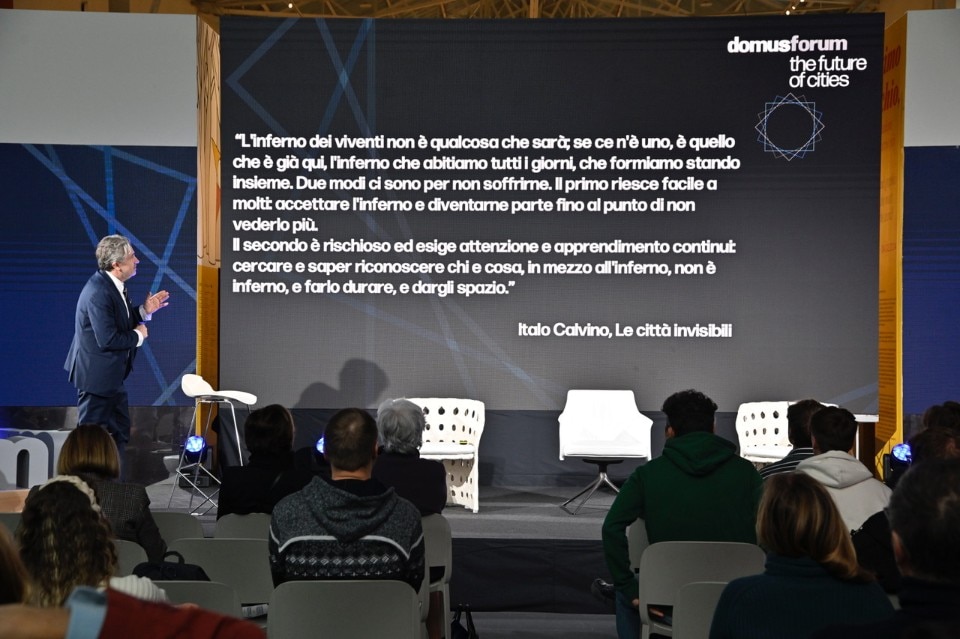A dialogue between the world of design and social sciences, to envision a more equitable and sustainable urban future. This is the mission that Domus once again promotes for the sixth edition of domusforum, the event that this year has taken place, exclusively in a physical form, in a new location with great significance: the ADI Design Museum in Milan, created around the historical collection of the Compasso d'Oro design award.
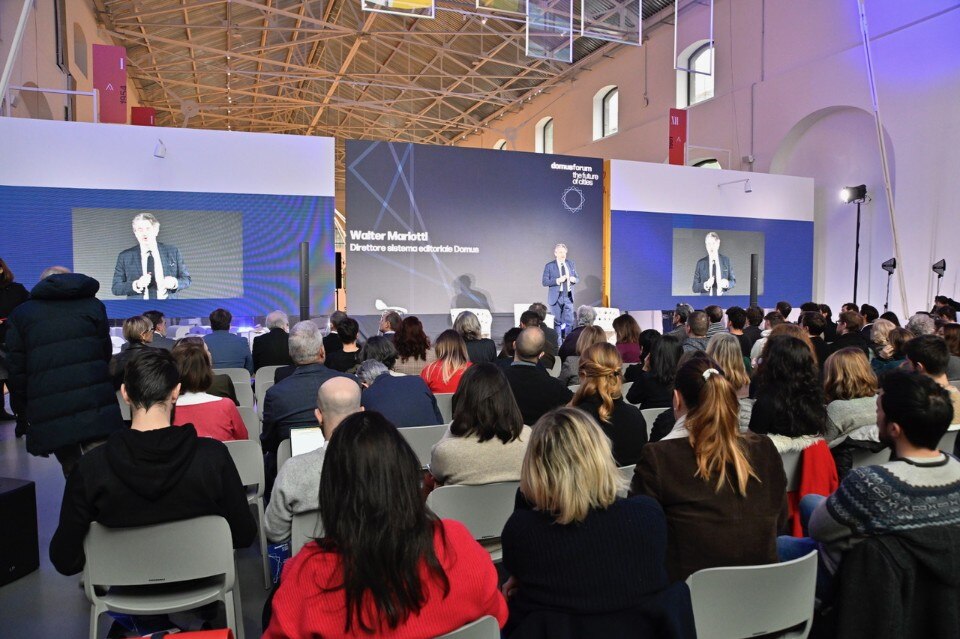
Walter Mariotti: "What capitalism will we leave to our grandchildren?"
What city will we leave to our children? More importantly, what capitalism will we leave to our grandchildren?
Walter Mariotti, Domus editorial director, opens the session with this question.
In the crisis of the great global cities, that of capitalism remain plastic representations, and questioning their spaces means questioning the economic and civil model of which they represent the nervous system. One exercise that can come to us is the tradition of Domus, which has made criticism its method since 1928.
John Maynard Keynes in one of his lectures in 1928 hypothesized that in the long run mankind would be destined to solve all economic problems and exploit freedom from economic pressures, with a caveat: “The great investors, those who always know how to make money, can take us with them into the realm of abundance. But this abundance will be enjoyed only by those who can cultivate the art of life, perfecting it without selling out.”
The Fourth Revolution, the evolution of globalization that has begun in recent years, will increasingly require global control, Mariotti adds, “to manage unemployment, imbalances, and the protection of the environment and humanity that can already no longer be set aside in the name of superior economic reason. This is why capitalism and the cities that are emerging from the pandemic are already very different from those that preceded it. And it will have in the culture of a new priority of values and new experiences its axis, because ‘singing, you know is not for everyone, but only those who sing will be able to endure life.’”
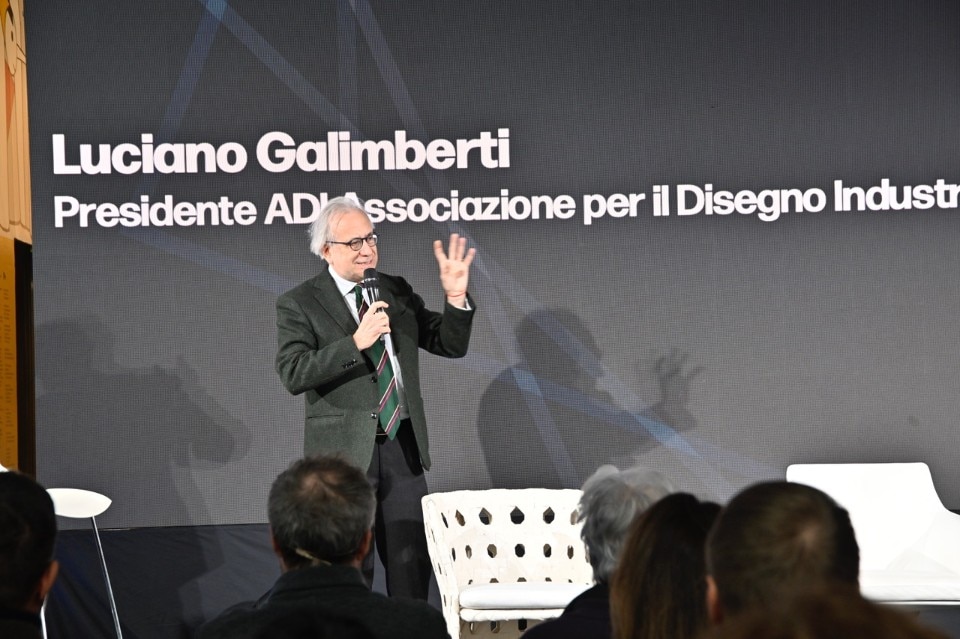
Luciano Galimberti: "The reformist image of an ever-moving future"
For Luciano Galimberti, president of ADI Design Museum, the liberalist economic system has shown its limits, today “goods pass where tanks pass”: it is a scenario of closed nations where, however, more than half of the world's population lives in cities. The modern, ideological dream through which to shape them has failed, as has then failed postmodern disengagement: what remains? The reformist image of an ever-moving future, where to have listening skills and design skills. Designers must not abdicate their role, and imagine being a little better than we are.
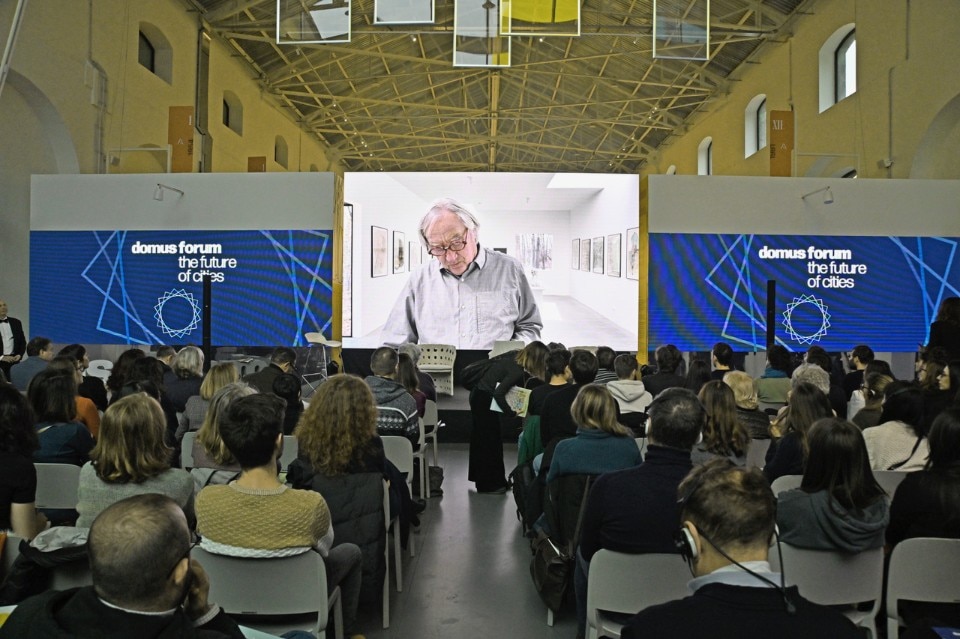
Steven Holl, guest editor Domus 2023: one year at Domus
“The 5 issues of Domus I orchestrated from the macro- to the micro- are a kind of manifesto for how architecture and urban design should be working today”, says Steven Holl, guest editor Domus 2023.
From the oceanic, the idea that the Earth should be preserved, to the questions of perception, of how to experience our environment, the reflection has embraced cities and their differences, then the stochastic thinking, the synthesis of the arts, opening up the unpredictable, embracing uncertainty, the heart of the creative process. The fifth issue has embraced the haptic realm, the realm of material and detail, the realm where really architecture speaks to every individual: when we get down to the experience of space, of design, of architecture, the detail, the material, the way things are put together are really key.
We have to organize for a future with the very dimensions of the planet changing, but not without a sense of humour, and the hope is to take these five topics and condense them in a small book in the future.
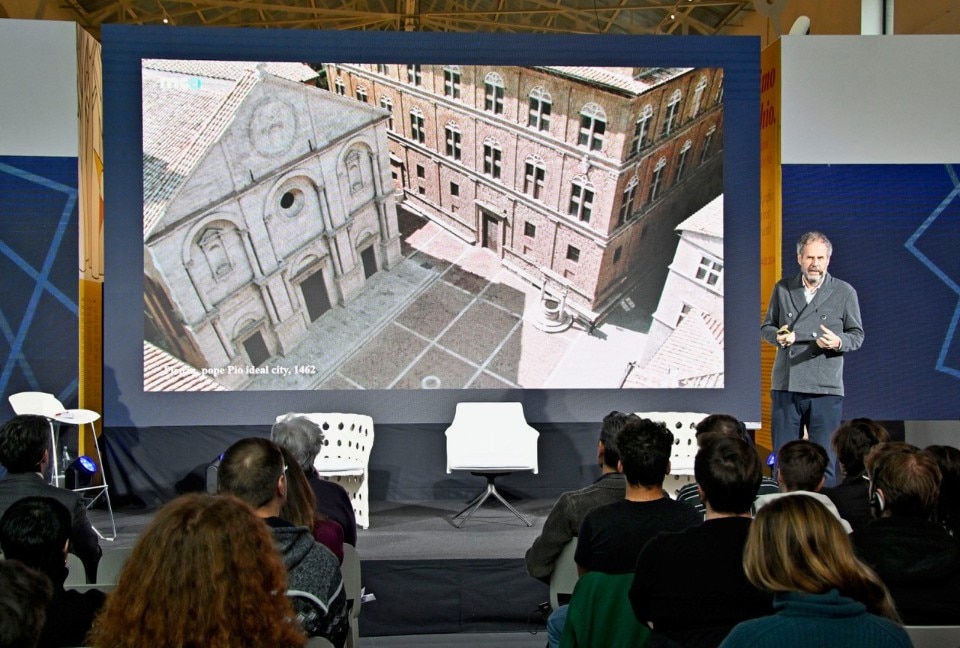
Mario Cucinella: "Art regenerates life"
Future cities designers have the responsibility to think of them not only from an urban planning point of view but above all from a social point of view, resumes architect Mario Cucinella, curator of the Italian pavilion for Expo Osaka 2025. The curatorial concept that the pavilion will promote is “art regenerates life”: It is a message that comes to us from the cities of the Italian Renaissance, Urbino, Pienza, Palmanova, and lands in the visions of so many contemporary cities, passing through the dreams of the working-class cities where we can live and work, or the modern founding cities, Chandigarh but also Gibellina and the Martella of Matera: visions that time consolidates in the spirit of the communities that inhabit them.
The ideal city we have in mind today, in fact, says Cucinella, is one that we have to take care of, it is living together even in anachronistic cities, plagued today by building poverty, where sustainability and public space play a crucial role, looking for a matrix that allows their design.
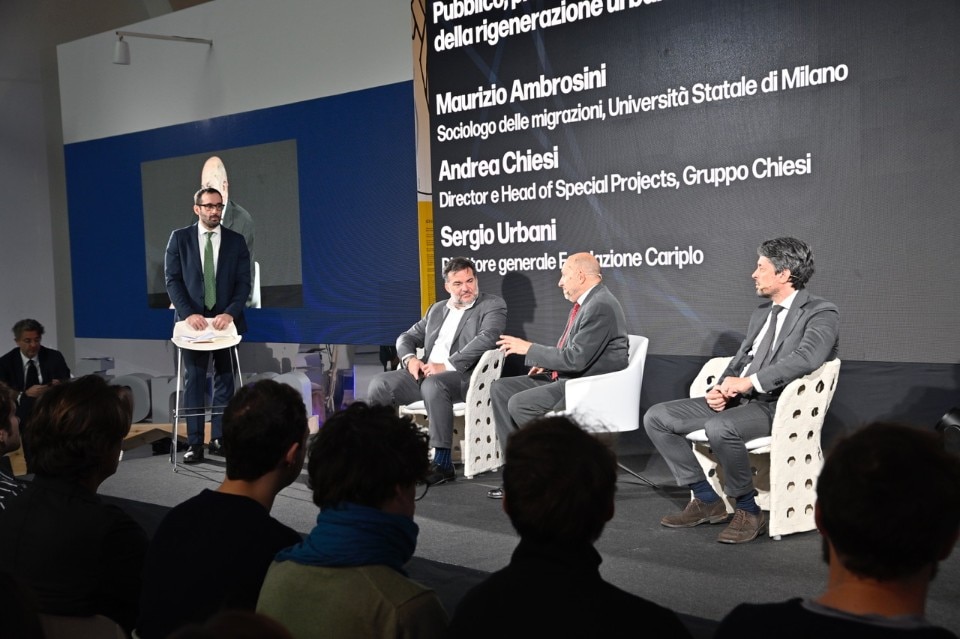
Public, private and third sectors testing urban regeneration.
Massimo Valz-Gris moderates Maurizio Ambrosini, Sociologist, Università Statale di Milano; Andrea Chiesi, Director and Head of Special Projects, Chiesi Group; Sergio Urbani, General Director Fondazione Cariplo.
Andrea Chiesi, director of special projects for the Chiesi Group, opens the first panel discussion of domusforum 23 starting with the urban role of the companys’s historic site in Parma, now that the plant has migrated out of town: a central location of great social complexity, a neighborhood with which Chiesi has opened a caring relationship.
It is from the interest in these practices that Maurizio Ambrosini, professor of sociology of migration at the Universities of Milan and Nice, starts to analyze today’s Italy: no an “invaded” country as some describe it, but a country with difficulties in metabolizing a global phenomenon such as migration, which brings strong urban concentrations with a multiproblematic character. Poverty first and foremost, lack of recognition. Often well-intentioned public policies have yielded ruinous outcomes - the French or Belgian banlieues - elsewhere instead a blind eye is turned to the difficulties, elsewhere still where spaces open up immigration takes over.
The idea of regeneration was in fact arrived at through the theme of housing, Sergio Urbani, director general of Fondazione Cariplo, resumes: in Fondazione’s regeneration projects, it was then culture that built with housing the generative foundation of new communities, even in the difficulties, and in the risk of transforming regeneration into nuclei of gentrification (a question that is still open).
It is here that Chiesi picks up: it is precisely on the axis of culture that the regeneration project for Parma has moved, and on the development of a center for open innovation that is also open to other companies motivated to orient themselves toward a sustainable future, with a view to openness.
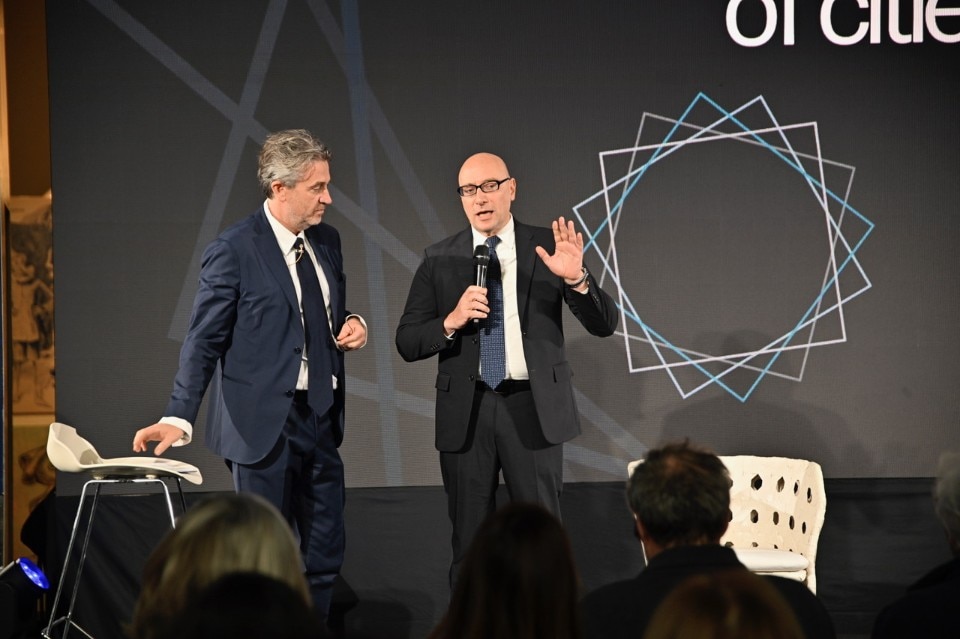
Considering stories like these, the albeit controversial term “integration” remains the least worst, Ambrosini says: “assimilation” had been used in the U.S. since the 1960s, imprinted with an idea of cultural conformity. We have become more cautious, speaking of a two-way process, but even that has not really been had. Better to talk about “acceptance”, starting with interaction, equal dialogue-still not much if there is no roof over one’s head-and individual willingness to interact and participate in urban society. Designed collective spaces must incentivize it, in a context where those still seen as margins of society are showing activism and going to constitute a new middle class. Equally, institutions such as foundations must produce incentives, Urbani echoes, as enzymes that activate and guarantee processes, in true alliance with the private sector based on design, not just service provision.
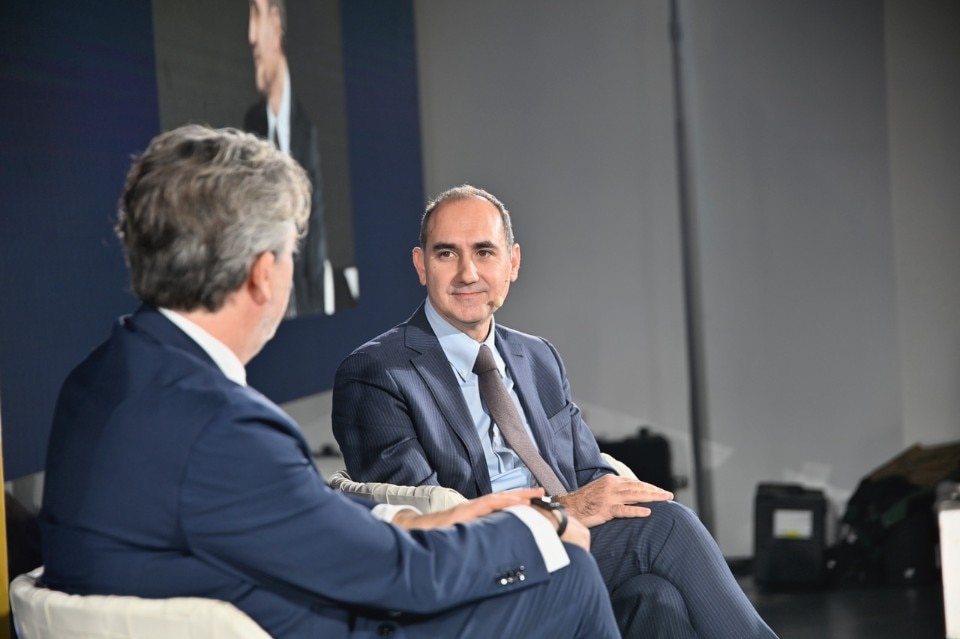
Cars as domestic landscapes and signs in the cities
Lancia’s new vision is a design that is elegant but also pure and radical: car interiors thought of as those of a home, a statement rooted in the distinctiveness of the Italian approach to interior design. Cities are modified by the car, and the car is modified by the city, proposes Walter Mariotti to Paolo Loiotile, Head of Lancia Product: how do you interface with this perspective in redefining a brand? Lancia has always produced aesthetic concepts with a more architectural vocation, Loiotile replies. In this vocation, and Carlo Scarpa is evoked, rethinking the theme of light, designed as a system of very clear graphic signs.
Cars, then, with the new generations become more and more shared, grafted into an increasingly heterogeneous mobility. With the upcoming models, moreover, Lancia specifically has embraced the electric transition to be completed by 2035.
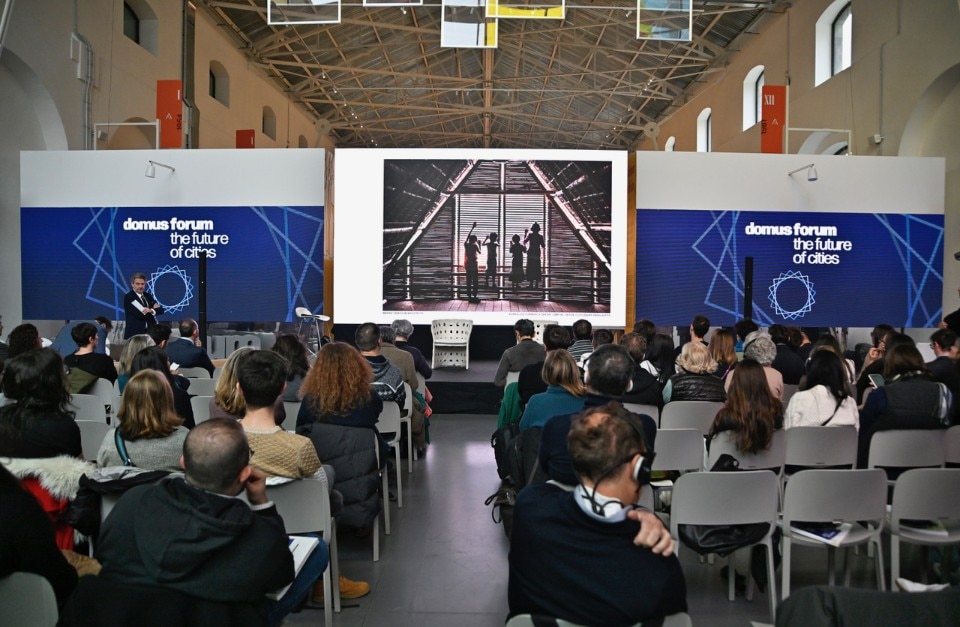
Toshiko Mori, guest editor Domus 2023 - Temporal
In a constantly shifting world, Toshiko Mori, guest editor 2023 for Domus, proposes the idea of temporal that, instead of focusing on spaces and objects, we should turn our attention to time as the other essential component making our lives in cities work, we are always in motion with time. Instead of focusing on shapes, forms and outlines. Why not shift to the movements, events and processes? Thinking temporarily can address direct solution to acute conditions or other times become a planning strategy, in a world where the number of refugees globally rose to 35 point 5 million in 2020 to an increase of nearly 8 million for the previous year, still increasing exponentially today due to conflicts in Ukraine, Israel and Palestine and elsewhere in the world.
While it may be in different states and shapes, the idea of a continuous time makes our physical world function in our short life, looking at design in a way that is open to change.
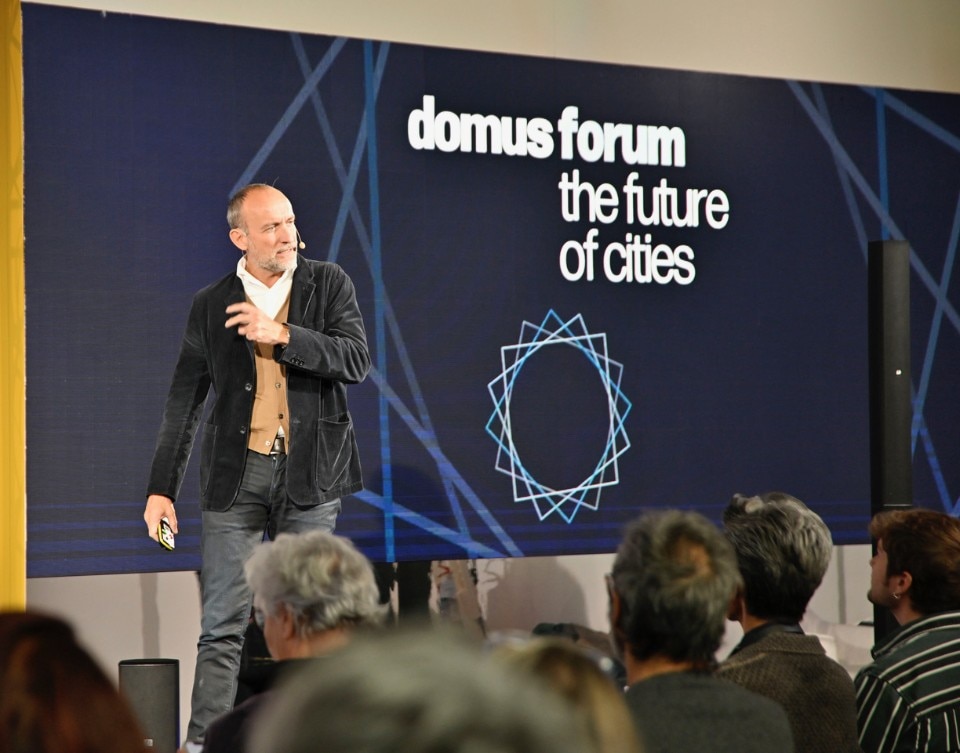
Javier Arpa Fernàndez, urbanist, TU Delft, MVRDV - Research, communicate, act!
How do we communicate, how do we transfer all the research we do in the academy to different audiences? What questions do we transfer? asks urban planner Javier Arpa Fernàndez, professor at TU Delft and associated with MVRDV studio, the contemporary ruins of unfinished cities tell us that capitalism has gone too far and we designers, we humans have been part of that. “At Domus, we brought out that geopolitics, mining and climate are also design issues: everything is urbanism”, he says. A call to all visionaries is what we are committed to, to give concrete and realistic tools for transformation.
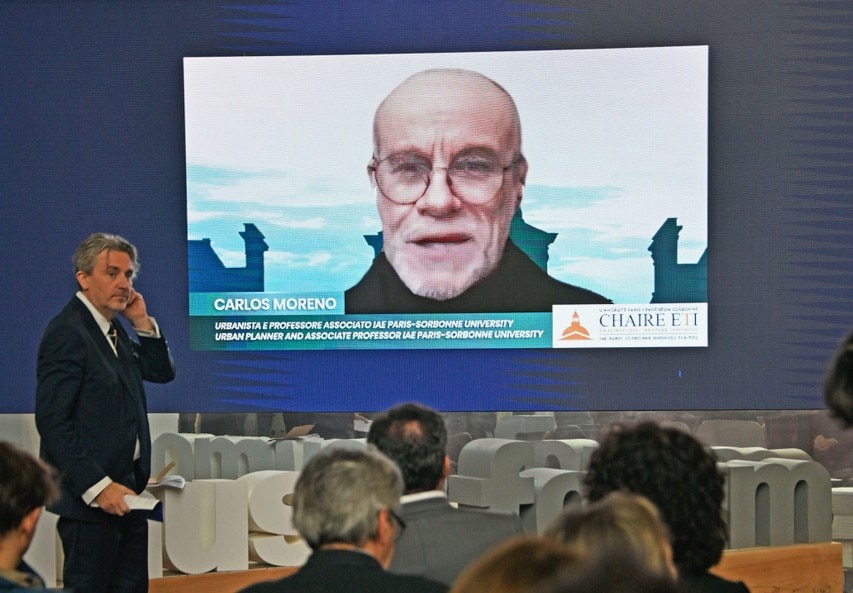
Carlos Moreno, urbanist, Paris1 Sorbonne University - 15-minute city
A research started in 2010, the happy proximity, the 15 Minute city has become a global movement with lots of different implementations, says its first theorist, the urbanist Carlos Moreno: the strategic point is to design now a city or a territory oriented by a urbanism fully dedicated to offering lots of different services within a short perimeter. The goal is to enhance the quality of life by reducing reliance on cars, cutting down commute times, fostering local interaction, and creating vibrant, community-focused neighborhoods that contribute to the health and happiness of citizens, where convenience and accessibility are balanced with green spaces and social connections, leading to a more holistic and integrated urban living experience.
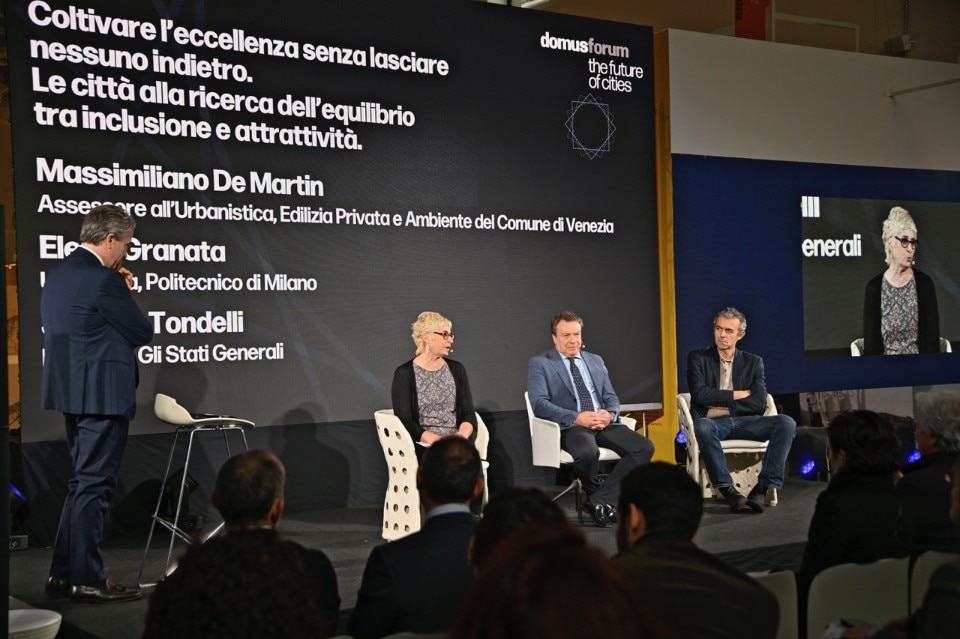
Cultivate excellence without leaving anyone behind. Cities in search of a balance between inclusion and attractiveness.
Walter Mariotti modera Massimiliano De Martin, assessore all’Urbanistica del Comune di Venezia; Elena Granata, urbanista, Politecnico di Milano; Jacopo Tondelli, direttore Gli Stati Generali
“But where is the architectural thinking?“, so breaks the ice of the second panel discussion Elena Granata, urban planner at the Milan Polytechnic: “Today Italy has a huge problem of contradiction between what we say what we are and what we want”. Cities are complex organisms that paradoxically grow the moment they include and attract. But then once they do, they become selective: and so come the gentrification. Milan, too, has not listened to a demand for inclusion. And this is what we have to deal with: Who do we want to include?
These are the paradigm questions of successful cities, recoils Jacopo Tondelli, director of Gli Stati Generali: How do the excellent city and the students demonstrating in the tents fit together? You lose the alliance between the roughly 72 percent of the urban population, the homeowners, voters, and the remainder, useful workers but not voters, expelled.
What does the policy do operationally, Massimiliano De Martin, Councillor for Urban Planning of the City of Venice, introduces: deliberate and implement appeal-proof, and time-proof – there can be no more 20-year processes--and with resources optimally exploited, thinking in growth.
But the skin of a city that offers only consumption is no longer adequate, Granata adds.
But a city that offers only consumption is no longer adequate, Granata retorts. It is time to depavage, demolish, deconstruct a mental armamentarium that is totally twentieth-century.
Milan, then, fits into the scenario of great international cities, Tondelli replies, often going against the grain with respect to the surrounding phenomena of regress. Yet how can the radical impulses of opposition to its consumer dimension be transformed into a critical mass capable of having an effect? By allocating the 4.1 billion euros needed to implement an optimal level of energy transition for the entire city of Venice, which is an urban system and not a theme park, De Martin recoils: and it seems impossible to bring everyone around a shared action.
This is because the game is not a political one, Granata closes: it lies in rethinking the role of the administrator, a desirable utopia measured against the possible. Especially now that, pressed by the issue of resources, politics is making itself ancillary to market trends, as Tondelli points out.
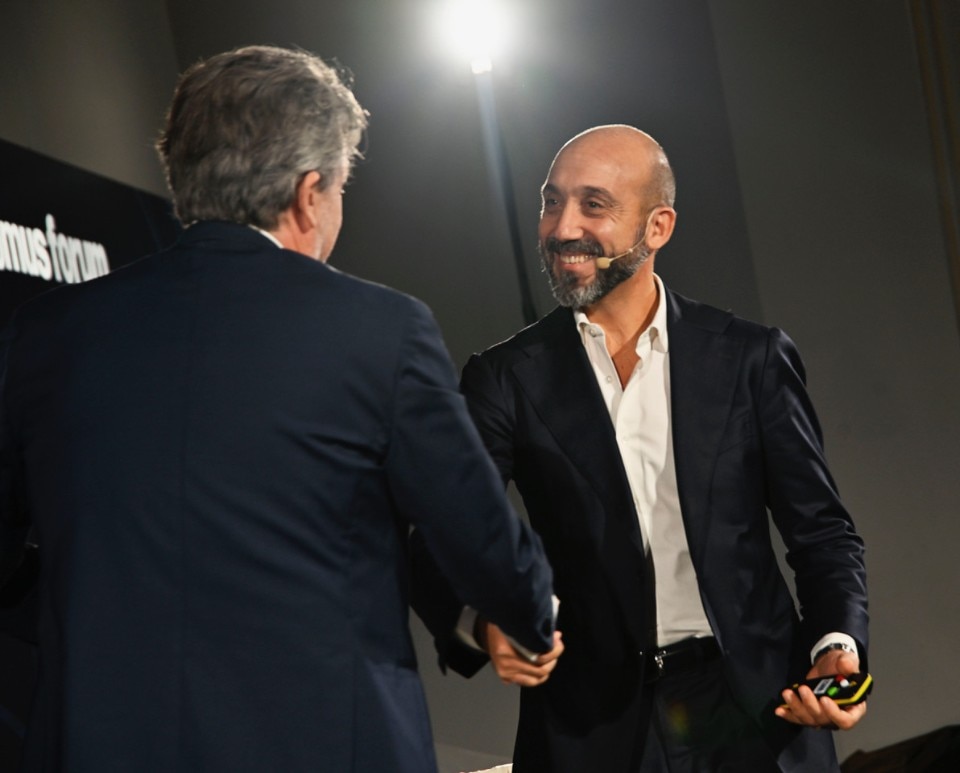
Andrea D’Acunto, partner EY, People Advisory Services Leader - The future of cities for the citizens of the future
How are cities changing and how is the relationship with citizens transforming? This question is the starting point for the research presented by Andrea D’Acunto, partner and People Advisory Services Leader at Ernst&Young. What is the spirit, perceptions and behaviors? Where is that readiness of cities to intersect feelings become behavior of city users? To be sure, the ability to change citizen behavior is strongest in small and medium-sized cities, experienced communally and driven by values. But at all scales, the demand for inclusion is an important generational fact. Generation Z is inclusive and demands to be included: listened to, involved in choices, made to participate in change. A demand that imposes a new view of tradition, cherished instead by previous generations: a tradition to be seen as baggage, as a resource, and not as a burden.


